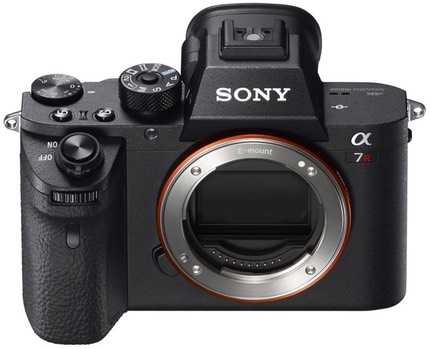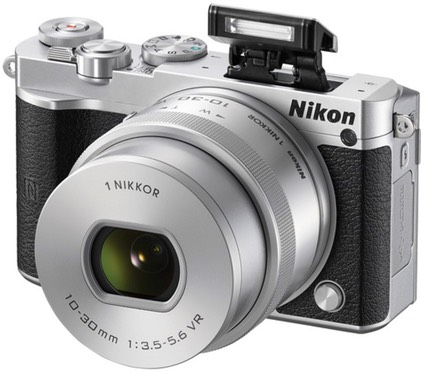(commentary)
Each year I look at all the new mirrorless cameras that were introduced during the year and pronounce one the Best Serious Mirrorless Camera of the Year, and another the Best Entry Mirrorless Camera of the Year.
For 2015 the entries were:
- Serious: E-M5II, X-T10, A7rII, GX8, A7sII, SL, and M (typ 262)
- Entry: X-A2, GF7, M3, M10, NX500, J5, G7, E-M10
Some might quibble a bit about my categorizations. For example, the Olympus E-M10 is certainly a serious camera with much of the OM-D bones to it, while the X-T10 might be called a more entry-level version of Fujifilm’s high end X-T1. But I categorized these as I did based upon conversations with potential users and purchasers. It’s not scientific, and I almost decided to create an “in between” class. Unfortunately, these days in mirrorless, we’ve got an enormous range of options, and that not only makes the job of splitting these into two groups difficult, it also makes choosing a camera very difficult, as you can find a model pretty much everywhere on the spectrum from no frills to kitchen sink.
The easiest decision for me this year was in the Best Serious Camera of the Year. I don’t think there’s any question here. While the Olympus E-M5II is a very fine camera, the Panasonic GX8 a very nice change of pace, the Fujifilm X-T10 a nice lower cost option yet still serious entry, and the Leica SL an intriguing and very different option, Sony pressed the pedal to the metal in iterating their A7 cameras both inside and out, and it shows. In the process of taking all three models from their initial presentation to Mark II models, Sony managed to clean up a lot of issues we had. But the real surprise in the A7r Mark II is this: a truly state of the art sensor that delivers on both still and video image quality, plus has focus performance that most people will find fast enough.

The A7rII is not a perfect camera, though. Button positions are still awkward; the menus need more attention to hierarchy, importance, and speed; we still can’t move the focus cursor as directly as we’d like; battery life can be hideously poor if you’re not careful in your settings; and the body just doesn’t feel great in the hand for long periods. That said, there’s not another mirrorless camera that can match it in image quality, even in lowish light. Very few can match it in focus speed and accuracy (though, as usual, extracting said performance requires careful study of the options). While on the video side we’ve got a very usable 4K video camera (though I’d tend to suggest the A7sII for someone mostly doing video). 42mp on a full frame BSI CMOS sensor using Sony’s latest Exmor technologies is basically state of the art. Now that Sony’s upgraded the firmware so that we can actually get uncompressed data from the sensor, I judge the A7rII to be right up there with my D810 in terms of image quality expectations.
Wait, did I just imply equal? Yes. But the Sony has 42mp BSI and the Nikon is only 36mp and isn’t BSI. Sorry, but that small boost in pixel count really doesn’t change resolution in any way that you’ll see in your output, and the BSI doesn’t really gain you anything substantive in dynamic range with large photosites. The BSI actually seems to improve some adapted lens use more than anything else (the BSI places the light collection up higher in the sensor and collects more light from severe angles, something that can be problematic with some older wide angle lens designs).
But equal is great. Here we are almost four years into the 36mp Nikon cycle and the Nikon DSLRs using that sensor are still producing the very best image quality and data integrity you can get in anything smaller than medium format. Sony is clearly matching that with the A7rII. I’d still rate the D810 as the “best all-around ILC you can buy” right now, but the A7rII needs to be considered right behind it. The A7rII is better at (most) video, but the D810 still has nuances to it that make it a better choice for serious still photographers.
Certainly the appearance of the A7rII changed my camera habits a bit. I’m using my m4/3 gear and D810 less, and the A7rII with the three f/4 zooms makes for a pretty portable kit that produces some darned good images without any big penalties (other than carrying a lot of batteries). Sony’s to be commended for taking an already good camera and pushing it right up to state-of-the-art. I heartily look forward to seeing what they can do with a Mark III.
The Sony A7r Mark II is my Best Serious Mirrorless Camera of the Year. And clearly so.
Oh that it were so easy in the Entry category. What we’ve got here is a real mishmash of products, some which look a lot like the serious entries, but with something in them cut down to better appeal to a true entry consumer. The Canon M3 is Canon’s top end of their mirrorless system, and a large degree it’s kind of like a low-end Canon DSLR without a built-in viewfinder. That should be serious, right?
All the cameras I placed in this category are there because I see them more as cameras that people will approach much more casually. Some are seriously small, which encourages carrying them all the time and using them for casual photography, even by serious enthusiasts and pros. For example, if you’re an m4/3 user as I am, the Olympus E-M10II is a ridiculously small version of the other OM-D cameras, and not with a lot of compromises taken to get there.
Most of the cameras in the entry category come as point-and-shooters, through: cameras designed to be used at arms-length and not at the eye (yes, I know you can get an optional EVF for the M3 while two of the group have built-in EVFs). In the end, it was this attribute coupled with smallness that tipped my decision: past Entry Mirrorless Cameras of the Year have been characterized by those two things. Indeed, I’ll be clear that I have a bias here: given that we have some smallish serious cameras, I would simply tell you to buy one of those and skip the entry category except for one thing: the great entry cameras are truly something you can carry with you all the time without burden. The Panasonic GM series—past winners of this award—have an attribute that catapults them above most serious compact cameras with large sensors: they’re pocketable (albeit a large pocket) but have the ability to change lenses with need.
Which brings me to this year’s winner. I’ll admit I have some qualms with my choice: this is not the clear winner that the Sony was in the previous category. However, this year’s winner is the only one of the group that really compels me to want to carry it everywhere: the Nikon J5. It’s a shame that this camera doesn’t have the lens set that would really distinguish it, though, and that’s one of my qualms.

The J5 competes squarely against a camera such as the Sony RX100. Indeed, they use versions of the same excellent Exmor sensor. The Sony is more pocketable, the Nikon has interchangeable lenses and arguably the best autofocus system we’ve seen to date in mirrorless cameras. But look at the “kit” configurations:
- Sony — 24-70mm (equivalent) f/1.8-2.8
- Nikon — 27-81mm (equivalent) f/3.5-5.6
Ugh. The J5 is giving up some significant wide angle ability while also giving up as much as two stops of aperture at the other end. On the other hand we can stick a native lens on it that gets us to 810mm (equivalent) while the Sony is just "basic mid-range is all you get.” The Nikon also has fast 50mm and 85mm (again equivalents) that are exceptionally good lenses, and with the latter takes back two stops from the Sony at f/1.2. Moreover, the 30-100mm lens option makes for one of the most compact (and high quality) 81-270mm ILC options you can carry around, and that’s one of the things that tipped my views here. But it’s almost as if the Nikon 1 engineers are having frequent Jekyll and Hyde moments: sometimes the Nikon 1 options are stunning (focus performance, frame rate, the 32mm f/1.2, etc.), while others are “we don’t really care about images” decisions (f/3.5-5.6 lenses, lack of some external controls, terrible Auto ISO capabilities, 15 fps 4K video, etc.).
More so than any other camera I’ve picked since establishing these awards several years ago, the J5 as Entry Mirrorless Camera of the Year makes me cringe a little bit. Don’t get me wrong, it wouldn’t get this award if it wasn’t capable of great things, things you can’t do with the other entry cameras I considered. The sensor is capable of better-than-you’d-expect image quality when used properly. The lens flexibility in such a small package is outstanding. As noted, this is a small camera that knows how to focus, and do so with fast precision.
Yet for generation five of the model (J1, J2, J3, J4 came previously), it just doesn’t quite feel as polished and finished as it should. Nikon’s not alone in this, by the way. The Sony RX100 I’m using in some of my comparisons here is a fourth generation camera itself, and after making some quick advances in earlier models, I feel that the Mark IV was not only not an advance, but feels more like a step backward by the Sony engineers. Oh, I should note that the Sony RX100IV is twice as expensive as the Nikon J5, but I don’t consider price in these decisions. The Olympus E-M10 Mark II might be the best bargain of the bunch in this category when you consider the mix of features and performance for the price. Indeed, it was my runner-up choice for this category this year.
The J5 is more of a love me/hate me camera. The love part comes from what I can actually do with the camera. It punches far above its weight class. The hate part comes from trying to make the camera do those things ;~). Nikon makes getting the best out of this camera way more difficult than it should be.
As I noted, this category is a real mix of products this year. The Samsung NX-500 has everything that I liked about the NX-1 except the body style and the EVF. Of this year’s entry products, it has the best image quality of the bunch. The m4/3 products in this category are all in the middle of their companies’ lineups, so neither Olympus nor Panasonic truly think of them as entry models, and it shows in features and performance. The Canon products seem to be more of the same from Canon, with the M3 tweaking the M2 a bit, the M10 giving you a lower-specified option at a lower cost. There’s not a lot wrong with the EOS M line that Canon is producing other than we have yet to see a truly top end model, plus the lens selection and focus performance is still disappointing. If you have a Canon DSLR, the EOS M3 actually may be your best choice of a mirrorless entry option.
But, after going round and round with trying to rationalize my thinking, I noted that the camera that I most often would stick in my (jacket) pocket out of this group was the Nikon J5. With the 18mm f/1.8 lens it’s a tremendous low profile and completely silent street shooter. We were spending thousands of dollars to get this level of image quality just a decade ago in an ILC.
So this year’s Best Entry Mirrorless Camera of the Year is the Nikon J5.
